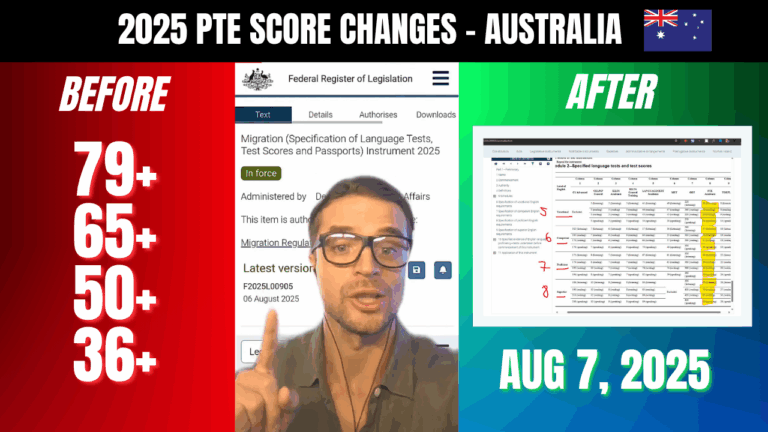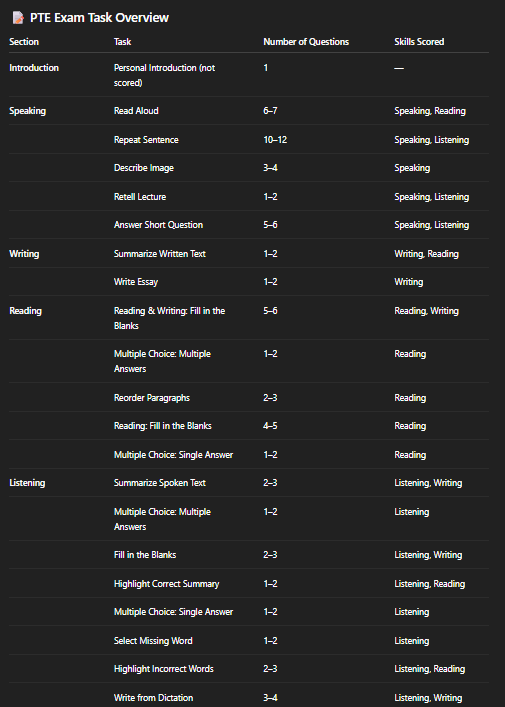PTE Describe Image 2025: The Complete Guide to Scoring High
PTE describe image is a crucial speaking task.
The truth is, Describe Image isn’t just about describing what you see. It’s about telling a story with data, and once you understand this approach, you’ll find this task becomes much more manageable – and even enjoyable!
What Exactly is PTE Describe Image?
Let’s start with the basics. In the PTE Speaking Describe Image task, you’ll see a visual on your screen – usually a graph, chart, table, or sometimes a photograph. You get 25 seconds to study it, then 40 seconds to describe what you see.
Here’s what makes this task challenging for most students:
- Time pressure: 25 seconds feels incredibly short when you’re nervous
- Not knowing what to prioritize: Should you mention every number or focus on trends?
- Speaking for the full 40 seconds: Many students run out of things to say
- Dealing with unfamiliar topics: What if it’s about something you’ve never heard of?
But here’s the good news: once you have the right approach, these challenges become much easier to handle.

The Dream English Education Method: Tell the Story
At Dream English Education, we teach our students to think of Describe Image as storytelling, not just listing facts. Every graph, chart, or image has a story to tell – your job is to be the narrator.
Step 1: The 25-Second Strategy
Don’t waste those 25 seconds! Here’s exactly what to do:
First 5 seconds: Get oriented
- What type of visual is this? (bar chart, line graph, pie chart, etc.)
- What’s the main topic?
- What are the axes showing? (for graphs)
Next 15 seconds: Find the story
- What’s the highest point? The lowest?
- Are there any clear trends? (increasing, decreasing, stable)
- What’s surprising or stands out?
Final 5 seconds: Plan your structure
- How will you start?
- What 2-3 main points will you cover?
- How will you conclude?
Step 2: The 40-Second Structure
Here’s a simple structure that works for almost any Describe Image task:
Introduction (5-8 seconds)
Start with: “This [type of visual] shows/illustrates/displays [main topic]…”
Example: “This bar chart shows the reading habits of different age groups in the city of Winstone, measured in hours per week.”
Main Content (25-30 seconds)
Focus on 2-3 key observations:
- Highest and lowest values
- Clear trends or patterns
- Interesting comparisons
Example: “The most striking finding is that retired adults spend the most time reading books, at 8 hours per week. In contrast, students prefer social media, spending 7 hours weekly on this activity. Interestingly, newspapers have the lowest reading time across all groups, ranging from just 1 to 2 hours per week.”
Conclusion (5-7 seconds)
Wrap up with the overall message or most significant finding.
Example: “Overall, the data reveals that reading preferences vary significantly by age group, with books being most popular among older adults and social media dominating younger demographics.”
Common Mistakes (And How to Avoid Them – do NOT miss #5!)
Mistake #1: Trying to Mention Every Detail
What students do: “The first bar shows 2.5, the second shows 3.2, the third shows 1.8…”
What you should do: Focus on the big picture and main trends
Mistake #2: Using Memorized Templates
Why it’s dangerous: PTE’s NEW Human Checking (in Describe Image and Retell Lecture) can detect memorized responses and will lower your score significantly!
Better approach: Learn flexible language patterns, not fixed templates. You CAN start with a fixed structure (which is what we teach in class) – and once the students are comfortable with it – it becomes much easier to improvise and ‘freestyle’.
Mistake #3: Not Speaking for the Full 40 Seconds
The problem: Shorter responses typically get lower scores (we recommend speaking for between 30-35s if you need 65 or 79+ in PTE)
The solution: Always have a backup plan – you can elaborate on your points or add more comparisons
Mistake #4: Panicking with Unfamiliar Topics
Remember: You don’t need to be an expert on the topic
Focus on: What you can see in the data, not what you know about the subject
Mistake #5: Pausing, Correcting Yourself & Getting Stuck
ORAL FLUENCY in PTE Speaking is the #1 most important factor for computer scoring!
What is Oral Fluency? It’s speaking continuously without pauses and hesitations.
We recommend NOT correcting yourself – fluency is more important than accuracy!
This is also true for other questions in Speaking, including Read Aloud, Repeat Sentence & Retell Lecture.
Your Next Steps
Mastering PTE Describe Image takes practice, but with the right approach, it can become one of your strongest tasks. Here’s what to do next:
- Practice the 25-second analysis with different image types
- Record yourself speaking for exactly 40 seconds
- Focus on fluency over perfect vocabulary
- Learn the story-telling approach rather than just listing facts
- Time yourself consistently to build your internal clock
Remember, at Dream English Education, we’ve seen students go from struggling with Describe Image to scoring 80+ points consistently. The key is understanding that this task is about communication and fluency, not perfection.
If you want more personalized guidance and practice with authentic PTE materials, consider joining our weekend classes where we provide detailed feedback and help you fine-tune your approach for maximum scores.
Good luck with your PTE preparation – you’ve got this!
Alex 🙂
👉 Access Our Full Bank of Real Exam Questions + AI-Scored Mock Tests at: https://platform.dreamenglish.com.au
👉 For PTE Coaching & teacher support, text our team on WhatsApp: +61 423 058 115







